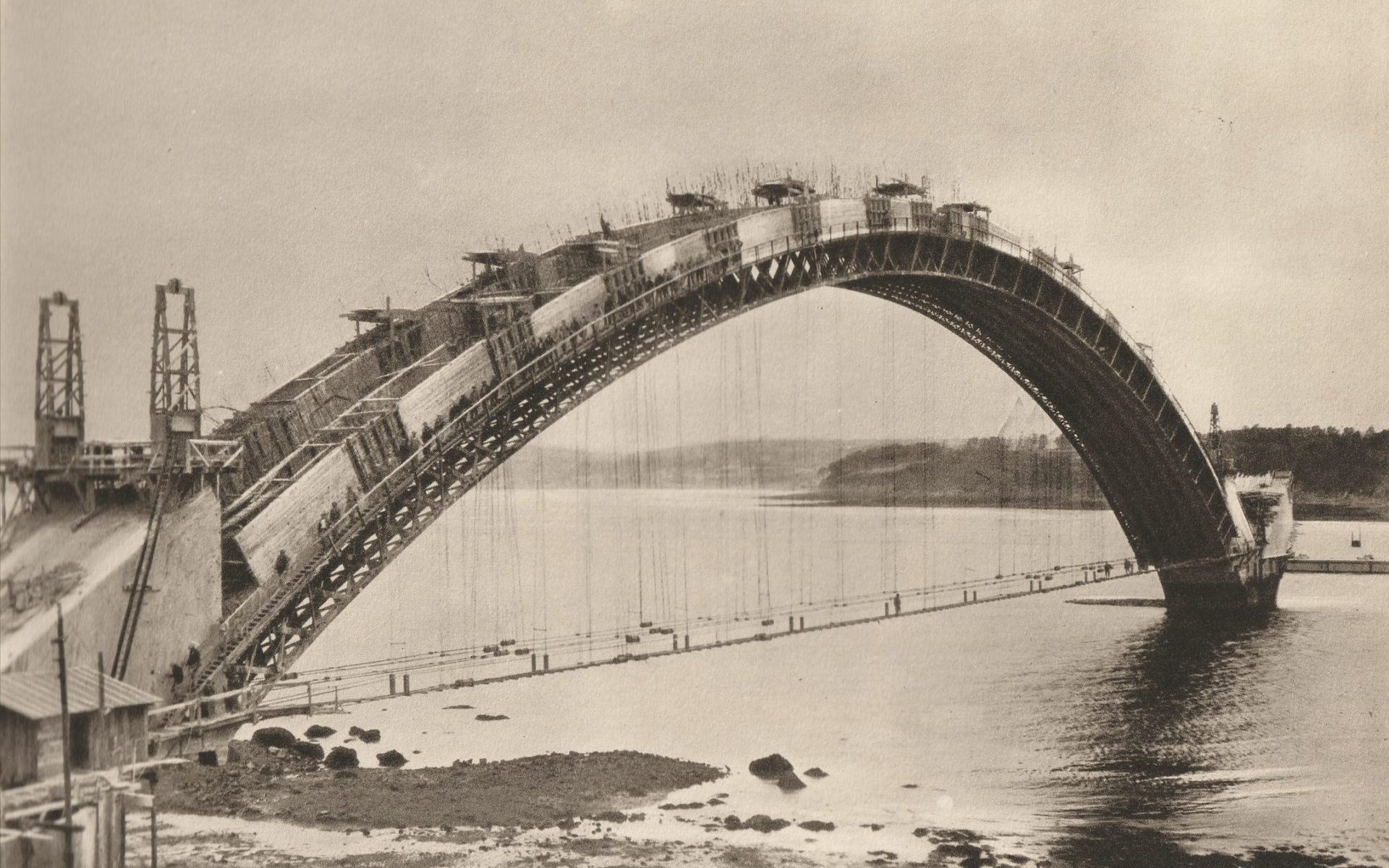Construction of the Albert-Louppe Bridge, from the brochure Le pont Albert Louppe, Finistère published by the Société anonyme des enterprises Limousin in 1930, coll. part.
This photograph shows the construction of the Albert-Louppe Bridge over the Elorn River in the harbour of Brest. This was a long-awaited construction project. Until its commission, people had to use ferries at Le Passage to cross the river. Men, goods and even cattle were loaded onto the ferries. The arrival of cars made the ferry obsolete and it was with great pomp that the bridge, built by the engineer Eugène Freyssinet (1879-1962), was inaugurated in 1930 by the President of the Republic.
The bridge is remarkable from both a technical and aesthetic point of view. It consists of three arch- spans of 173 m each, a world record at the time of its construction. The monumental formwork for the arches was made on land, then transported over the banks and erected onto the piles placed in the river. The bridge was designed with two decks: an upper deck for cars and a lower deck for the train (though ultimately rails were never installed).
The bridge was badly damaged during the war, but the destroyed arch was quickly rebuilt, perhaps a little too quickly: it is this same arch that is now showing signs of severe deterioration. The bridge’s functional deck was widened in the 1960s, but increasingly dense car traffic has made it obsolete. In the early 1990s, another bridge was built next to it. Since then, the Albert-Louppe Bridge is still used but by walkers, cyclists and roller- skaters.
The future of this bridge, which has been designated a “20th century heritage site”, currently seems uncertain. The cost of destroying this exceptional architectural heritage would be just as high as that of renovating it.
Sonia de Puineuf

